
NIL
What Barilla's Formula 1 move means for sports advertising beyond the Super Bowl
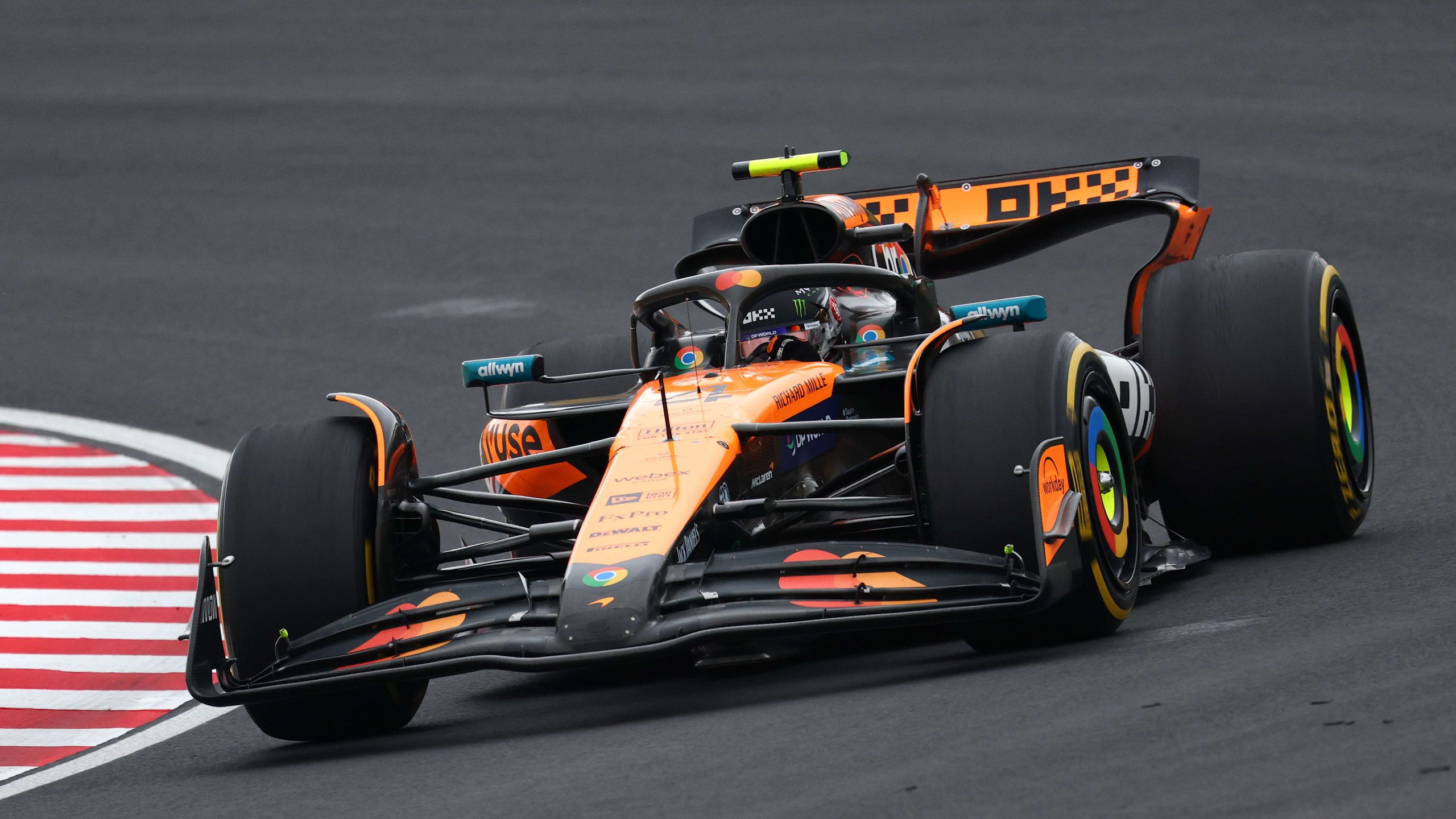

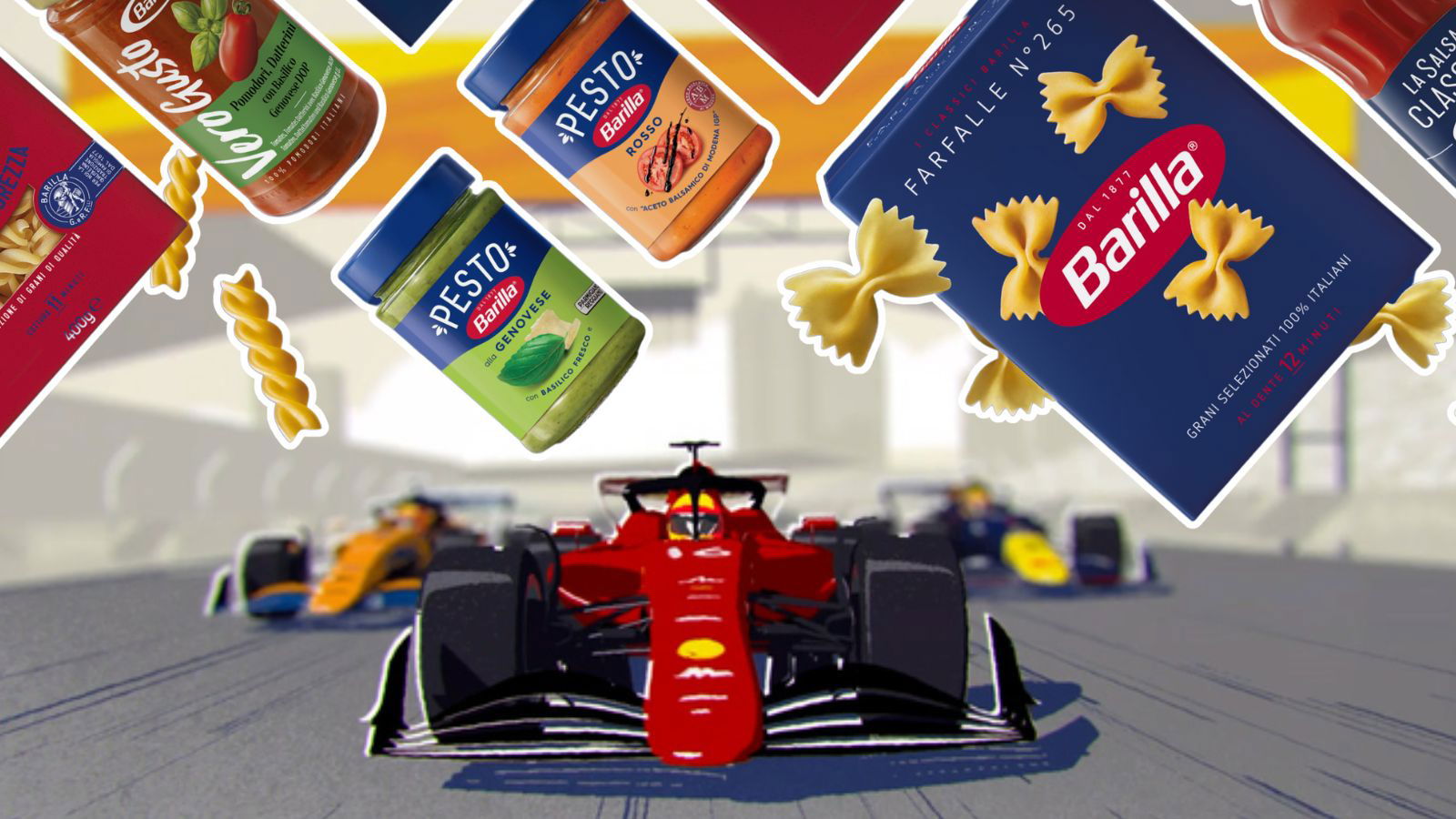
At 300 kilometers per hour, Formula 1 is all about speed, precision, and performance. Pasta, on the other hand, is slow-cooked comfort. But in today’s marketing landscape, unexpected pairings are often the most powerful—and that’s exactly what makes the recent partnership between Barilla and Formula 1 so intriguing.
Barilla’s new multi-year deal as an official partner of Formula 1 marks the latest in a wave of FMCG brands aligning with the sport—not just for visibility, but for storytelling. Following in the footsteps of KitKat and RedBull, Barilla is using the global stage of motorsport to reframe its brand around connection, culture, and experience.
For starters, one might question what does a plate of pasta have in common with a Formula 1 car? At first glance, not much but dig deeper and one might realise that the partnership works on multiple levels. At a product level, each domain needs a lot of craftsmanship and practice to deliver a high quality and well branded experience, said Prantik Mazumdar, president of TiE Singapore and SportsTech evangelist.
Don’t miss: Offside or on track: Why Manchester United fans have mixed reactions to the new stadium
Additionally, Barilla group isn’t new to sports sponsorship given their past association and brand campaigns with tennis legends, Roger Federer and Coco Gauff. Moreover, Paolo Barilla, the company’s vice president and billionaire owner himself was a Formula 1 driver, who raced for the Minardi team in 1989-1990. “Given these associations, I think it makes for an interesting and intriguing angle for Barilla to come on board as a second-tier partner with the F1 and speed up their growth leveraging the category,” added Mazumdar.
Similarly, Deborah Rowe, managing director of boutique sports and lifestyle PR agency, Talk of the Town said that both Formula 1 and Barilla are iconic brands with global reach. “Formula 1 is about high performance, precision, and passion – values Barilla shares in its approach to food and heritage. There’s also a growing trend of integrating lifestyle into sports,” said Rowe.
While a pasta bar in the Formula 1 paddock may feel indulgent, it is also human and relatable. “Imagine the fan who experiences this at a Formula 1 race. The next time they watch Formula 1 from home; they may crave pasta. That’s where brand affinity starts: through consistent, meaningful moments,” added Rowe, stating that:
F1 is no longer just about racing; it’s a lifestyle experience.
As such, FMCG brands stand to gain more than just visibility. They gain frequency, relevance and emotional storytelling. This is because Formula 1 offers not just global exposure but recurring touchpoints with fans. The season format also allows brands to build long-term narratives, unlike one-off sports events, said Rowe.
“More importantly, it gives FMCGs the chance to become part of rituals. Just like a hotdog is synonymous with American Football, pasta could easily become a race-day staple. With the right storytelling and activation, that kind of brand association can be incredibly powerful,” she added.
Firstly, at the product level, each domain needs a lot of craftsmanship and practice to deliver a high quality and well branded experience. Beyond that, the Barilla group isn’t new to sports sponsorship given their past association and stellar brand campaigns with tennis legends, Roger Federer and Coco Gauff. Last but not least, Paolo Barilla, the company’s vice president and billionaire owner himself was a F1 driver, who raced for the Minardi team in 1989-1990.
Given these associations, I think it makes for an interesting and intriguing angle for Barilla to come on board as a second tier partner with the F1 and speed up their growth leveraging the category
That said, FMCG brands are not the only brands that stand to gain from partnering with Formula 1. This is for as long the partnership aligns and is authentic to the brands. In conversation with MARKETING-INTERACTIVE, Darrelle Eng, head of brand, Singapore Sports Hub said the strength of a partnership is not just about the dollars, but the impact and association of what it means for the brand.
“It can be at a strategic or tactical level, depending on the objective, whether it is purely for awareness or it is for association,” said Eng. Even then, Formula 1 is in the position to choose who and what they would like to partner with.
Brands also have a choice of whether to partner with Formula 1 as a league or with a team. “Why choose Formula 1 and not a Formula 1 team or a Formula 1 driver? There is a distinction between wanting to sponsor a tour or a team or driver, it is ultimately dependent on what the objective is,” added Eng, explaining that brands could gain consistent exposure and awareness, but not loyalty as a partner of the sport.
In addition, partnering a team or a driver may give less exposure due to performance, but may achieve greater loyalty from fans who follow said team or driver. Eng stated:
“Ultimately, it is about the alignment of the brand to the audience that they are targeting and the authenticity of the partnership.”
Is Formula 1 the next Super Bowl?
As Formula 1 continues to evolve into a lifestyle and entertainment platform, its appeal to consumer goods companies has never been clearer. With global reach, digital-first storytelling, and an increasingly younger, more engaged fanbase, Formula 1 offers brands a unique proposition. The question is no longer why companies such as Barilla are getting involved—but what this shift signals about the future of sponsorship, and how Formula 1 is offering something that even legacy platforms like the Super Bowl or major football leagues may not.
According to sportspreneur Padmanabhan Manickam, the rise of FMCG partnerships with Formula 1 points to a broader shift in the global sponsorship landscape—particularly in regions where traditional tentpole events such as the Super Bowl hold less sway.
“Formula 1 definitely reaches a global audience, especially in this part of the world—Asia—where the Super Bowl can be less relevant for consumers,” Padmanabhan explains. “There are only a few sporting properties with true mass appeal here. Football, especially the FIFA World Cup, remains a key sponsorship asset, but it only comes around every four years. Beyond that, the English Premier League has global dominance, but football as the whole world knows, is super crowded.”
That’s where Formula 1 stands out. For FMCG brands, its regular race schedule and year-round visibility offer a level of consistency that’s hard to find elsewhere. “Formula 1 races happen regularly, and each event is backed by high-profile publicity. Continuous mass awareness is a no brainer for FMCG brands where high brand awareness amongst target consumers is a key requirement,” said Padmanabhan.
He added that Formula 1 still offers room for brands to innovate and stand out, compared to more mature and crowded sports platforms. “Formula 1 still has plenty of room and space for FMCG brands. It is less crowded compared to much matured sporting events,” said Padmanabhan.
Mazumdar agrees, adding that:
Barring soccer, Formula 1 is the only sport that offers this large global platform and a regular frequency to engage them, something even the Super Bowl can’t achieve given its geographical and season limitation.
Rowe echoes this, describing Formula 1 as a “storytelling powerhouse”—one that rivals the cultural impact of the Super Bowl. “The rise of ‘sportainment’ has changed how fans engage with sports. Many sporting leagues such as LIV Golf and the HSBC SVNS have adopted faster formats, more entertainment layers, and fan-centric innovations,” said Rowe. “This has attracted younger, digitally savvy audiences—and FMCG brands are taking note and want to be part of this high-energy space where sport, culture, and lifestyle intersect.”
A major catalyst in Formula 1’s transformation has been the success of Netflix’s Drive to Survive. “It’s helped fans connect deeply with the personalities behind the sport and made F1 more accessible and emotionally compelling. That kind of narrative depth is a dream for FMCG brands looking to build authentic connections,” Rowe explained. “They want to be part of these evolving stories, not just on race day but throughout the season.”
Formula 1 delivers global scale, regular engagement, and a luxury-meets-lifestyle narrative that allows brands to go far beyond a 30-second commercial. From VIP paddock experiences and digital activations to influencer collaborations and content creation, F1 offers a multi-layered sponsorship model with year-round visibility. “We’ve seen firsthand how blending sport with lifestyle elements such as music, food, and fan zones significantly boosts audience engagement,” added Rowe. “It’s this multi-sensory, emotionally resonant environment that makes F1 partnerships genuinely memorable and effective.”
However, Eng offers a different perspective, suggesting that comparing Formula 1 to the Super Bowl may be a case of apples and oranges. The Super Bowl is a one-off event, whereas Barilla’s association with Formula 1 is continuous—spanning 24 events across 21 countries. “Most importantly, is the ‘Super Bowl effect really what the sport or the industry wants?” said Eng.
Eng also raises an important point about the nature of Super Bowl advertising:
The Super Bowl has leaned on entertainment with the half-time show probably generating more views than maybe the game itself, so is it really the Super Bowl, or is it the half-time show generating the interest in brands to partner with?
What sets Formula 1 apart, Eng argues, is its unmatched level of aspiration. “To become a Formula 1 driver takes so much more than almost all other sports. You can pick up a racquet or a ball, you can run or swim nearly anywhere—but you can’t just get into a Formula 1 car and drive. The lack of accessibility to the equipment and the elite pathway to the sport makes it aspirational beyond just physical talent,” said Eng.
For brands such as Barilla, that aspirational quality aligns perfectly with its positioning. Barilla has clearly aligned itself with aspirational figures – Roger Federer, Coco Gauff, Michelin-starred chef Davide Oldani, stated Eng. Where Barilla is engaging with a global, high-value audience over time, Super Bowl advertisers are targeting the masses through volume and reach – primarily within a US-centric audience.
Join us this coming 23 – 24 April for #Content360, a two-day extravaganza centered around three core thematic pillars: Challenging The Norm; Technology For Transformation; and Unlocking Imagination. Immerse yourself in learning to curate content with creativity, critical thinking, and confidence with us at Content360!
Related articles:
KitKat teams up with Formula 1 to cater to growing diverse fanbase
These were the top mentioned brands during the Formula 1 weekend
Why are so many football athletes becoming the face of eCommerce lately?
NIL
When it comes to college football recruiting, Black mothers might just determine the future of the sport
It’s early December and ‘tis the season for college recruiters to lay their football mack all the way down.
The NCAA early signing period, when many high school athletes commit to where they’ll play at the next level, ends today, and it’ll soon be followed by a contact period. That’s when college coaches and staff can reach out directly to athletes and their families urging, cajoling, perhaps even promising riches to young prospects, trying to convince them to bring their ball-playing talents to their college or university.
And to win at that game, recruiters often single one person out for concentrated attention: Black mothers.
It’s a tacitly understood feature of student-athlete recruitment that’s crucial to the process but rarely acknowledged, studied or celebrated publicly. While the role of every mom in recruitment decisions is intuitively important, it’s Black mothers specifically who the entire game of football might just hinge on, said Tracie Canada, whose book Tackling the Everyday: Race and Nation in Big-Time College Football has a chapter that examines the centrality of Black mothers to the sport.
“I think plenty of people write about coaches. I think plenty of people write about fathers. I think plenty of people write about the men that surround football because that is the expectation,” said Canada, a professor of cultural anthropology, gender and sexuality, and feminist studies at Duke University.
“And so I also think that it is important to say that it is not only men that are allowing this sport to continue. Mothers not only give bodies to the sport, they’re giving birth to these players. They are also caring for them in a way that is different from the other people around them.”
Black mothers perform a type of specialized labor when it comes to their football-playing sons, giving them outsized influence on decisions about football and life. That labor involves care and kinship around “their holistic lives rather than just their lives as football players,” Canada said. It includes helping them navigate a world beyond the football field in large Black and brown bodies that are often reflexively feared and historically politicized.
Upwards of 40 percent of all NCAA college football players are Black, so the numbers alone make Black women at least partial gatekeepers of the sport. And from concerns about CTE (chronic traumatic encephalopathy) to NIL (name, image, and likeness) to the backlashes over DEI (diversity, equity, and inclusion), Black moms are taking notes.
For the third installment of our Recruiting While Black series, Canada spoke with Andscape about the centrality of Black mothers in football recruitment and their broader impact on the sport.
This interview has been edited for length and clarity.
In Tackling the Everyday, you’ve said your chapter on Black mothers has really found an audience and resonated deeply with people. Talk about what led you to that chapter and that line of inquiry.
The fact that this is the chapter in my book that people ask me about the most, to me, is a sign I’m picking up on something that people are so aware of, but they don’t often see it. It’s not in literature. It’s not usually given space. I’m specifically interested in Black football players, and the players themselves are consistently referencing their moms, when there’s no reason to talk about them. This is referencing how outsized they are in their lives, just how big these figures are to them in the decisions that they’re making in their daily behaviors, in their interactions with people around them, and it has always been clear to me that mothers are an important part of this story.
Because I’m a Black woman anthropologist, and an ethnographer doing this work, and because I am a Black feminist, I’m attuned to particular relationships. I’m attuned thinking about Black women and how their care and kinship align in a particular space, and these aren’t usually the analytics that we think about in football.
So in what specific or outsized ways did you notice that care showing up?
If you go to a football game, you can always tell whose kid belongs to who because the moms are very loud, they’re supportive of their son in a particular way, even if they’re supportive of the entire team. There might be a nickname that they yell out. They might be saying, “That’s my son!” They’re the ones that are wearing the T-shirts that might have his face on it, that might have his number on it. They bring the signs, they have the cowbells in college. They’re the ones who organize who’s going to the game this week. They’re the ones doing that labor.
Then as I’m spending time with these Black players, their moms were always brought up, and this was not something that I was asking about. There were players who called their mom every day. There was a player who was super proud that his mom bought all of his clothes because she knew what he liked to wear, but also knew where she could shop for him, given his size. In my book, the chapter title, “The Year My Mom Was Born,” came from an offhand comment that somebody made about his jersey number making him feel close to his mom. So I’m seeing this physical presence in their son’s lives alongside a constant reference from players.
The other thing that I think is relevant is that people assume that the players I was spending time with were from single-parent homes. These are mothers who have been married for a long time, often to the fathers of their children and I always have to say, “These are not single moms that have to do everything on their own.” These sons have very present fathers in their lives, too. But I was noticing there’s a different relationship that comes from moms of football players than fathers of football players. Fathers seemed to be very invested in the football player himself — of how well he did, of how he can improve, of what’s physically going on during a game. Players will often reference their dads as the reason that they started playing in the first place.
The relationship to football often comes through their dads, but I think that they are sustained by their moms. The moms are the ones who are doing a certain type of labor so that the player feels supported. And the moms also seem to be invested in them as people. There’s something in how they are asking about their holistic lives rather than just their lives as football players.
I think that that’s important across the board. But the reason why the focus is specifically on Black moms is because demographically Black players are overrepresented in football. Especially if we look at a college campus versus a college football team, Black men are severely overrepresented. So for a lot of these guys, the women that are around are going to be Black women.
You referenced the quote,”If 10 percent of mothers in this country would begin to perceive football as a dangerous sport, that is the end of football,” attributed to an unnamed NFL doctor in response to the work of Dr. Bennet Omalu (a forensic pathologist whose discovery of Chronic Traumatic Encephalopathy caused wholesale changes in concussion protocols).
How should we think of that quote in terms of the ways Black women guide and care for their football-playing sons?
The way that I write about it, if I’m taking that quote seriously, is that if moms didn’t buy into the sport, the sport would go away. So that means Black women are playing a significant and really important role here.
There are the ones who say, “I will not allow my son to play at this school, to play for this coach, to be in this division if I don’t feel OK with where he is. Even if he wants to. If I don’t feel it, you cannot go there. I will not allow that to happen.” And I think that these moms recognize something about how important it is that these are young Black men who live in particular bodies. It’s a body that’s usually big and strong, visibly so, in a way that is transgressive and is often outside of the norm. And so these moms are also [thinking]: My son is in danger on this field, but my son is also in danger in the real world outside of it because of the body that he lives in, given this anti-Black world that we exist in.
The way that I analyze it is that moms are the ones that clock all of these angles for their Black sons in a way that doesn’t seem to be taken into account as obviously by other people.
Have football programs, institutions and administrations responded to or shown that they recognize the role of mothers and Black mothers, specifically? And if so, what are some examples of that?
I remember one of the first, very early on conversations I had with one of the coaches. It was camp time, the semester hadn’t started yet, and one of the things he said was about how they recruit moms, and how if they recruit a player, the mom can be a great spokesperson for the program. She can attract other moms to get on board, and they can use networks of moms to attract players.
At the time I was doing research, all of these NFL safety clinics were also happening, and these were different NFL teams inviting moms of young players. Not college, high school and lower. It wasn’t a parents’ clinic, it wasn’t even just an NFL clinic, it was specifically the NFL Moms Safety Clinic. What happens in football, but probably across sports, is that the professional league is making certain decisions and things usually trickle down to the lower levels. The NFL affects college, which is going to affect high school, which is going to affect Pee Wee, so I thought it was really interesting that the NFL was specifically marketing to moms and kind of putting its brand name behind the importance of this particular group of people.
These weren’t small events. For the two that I went to, you’ve got like 200 moms there and most of them are Black women.
So my question is, with all the structural changes going on in college football, like NIL and divisive political issues facing the nation, do you think we’ll see a significant recruiting impact from Black mothers’ advice and influence and if so, when?
Sports as an arena is notorious for attempting to claim that it is not political. Fans come from all different backgrounds and all different walks of life, but they come together to support a team. The assumption is the same for the players and the coaches. It’s this idea that the team, and what we’re doing here, is the most important thing right now, and we don’t care about all the other stuff that’s going on. That the playing field is completely divorced from the real world outside of it. As I’m sure you can tell, I don’t agree with that. I’m someone who talks about how race actually matters in this space.
One part of me would say 2025 is actually not all that different because these concerns have always been there for Black people. We are seeing things that are familiar because these things happen over and over again. What does it mean to walk through the world in a particular body? What does it mean to be an athlete who is stereotyped as someone who is only useful for what their body can do. These things are happening now, but they have also happened before, and will probably happen in the future.
If you’re talking about recruiting, what I imagine might be going on in this particular moment is probably part of the conversation that families are having. When you’re playing the sport of football, there is always calculus, an algorithm that is not specified, but there are a lot of factors at play here and how am I going to make the best educated, safe, hope-for-success decision, right? Football is already a dangerous sport, so part of the risk assessment is like should I play or should I not? What is my risk if I do it and what is my risk if I don’t? Do I play in this state? Do I play for this coach? Do I push for this position?
Part of that conversation could be that this state as a whole is doing X, Y, and Z [politically], but I have a good chance of going pro if I’m with this coach, at this university, with these other people there. Or it might be that because of the state that this university is located in, is it actually riskier for me to be there because of who I am, and because my options outside of sport are much more limited?
I’m very curious about how this moment is going to play out over the next five years, given everything that has happened politically, socially, culturally in this country in the past five years. The landscape of college sports has changed dramatically in the last five years when coaches and institutions thought it was important to take [performative] stands on issues. Taking a stand is always a recruiting and retention tactic to convince players to stay, to convince players to come.
What are Black mothers talking about in terms of their sons’ safety, on and off the field, and how do you think the impact of these conversations will be felt, especially on the rosters of schools in states where college football is most revered?
I’m spending time with high school moms right now, so it is interesting to see that what they are saying is not much different than all the things college moms had top of mind. It is about injuries. It’s about is my kid going to be taken care of? It’s about what kind of man is that coach and what kind of man is he going to encourage my son to be, right?
Black mothers are still going to be central to those decisions. Black moms are still paying attention. They’re taking notes. They are remembering these offhand comments that were made. They’re watching the news. They’re aware, but they’re also aware of what’s happening at their kids’ high school. They’re aware of what’s happening at the colleges that they’re looking at. They’re aware of what’s happening with the coaches at both of these places and what’s happening in the states where these schools are located, and how far away their kids are going to be away from them. These dynamics are always being taken into account by moms as they’re supporting their sons as they make these decisions about their future.
NIL
2026 football schedule change announced
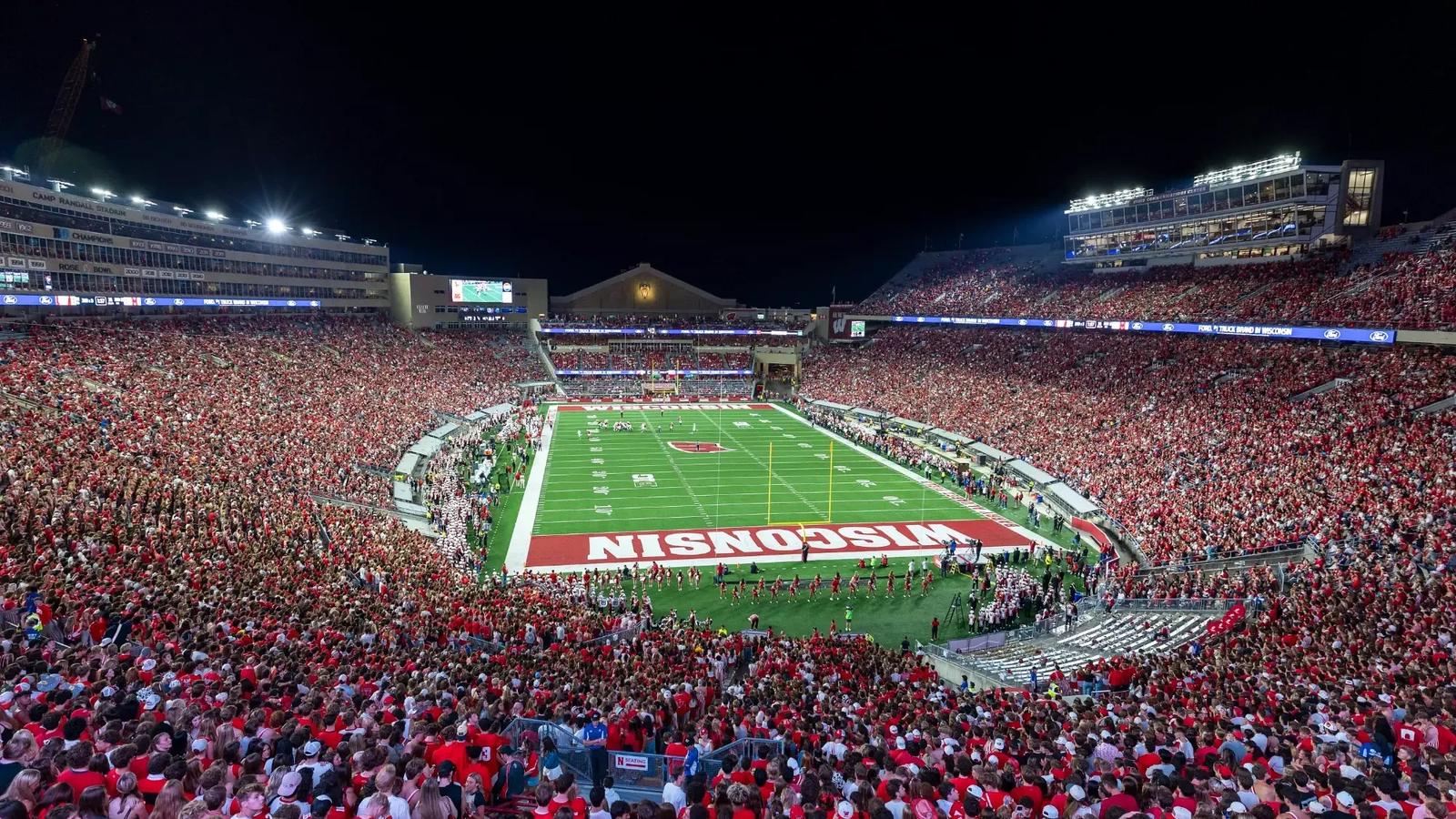
NIL
Major college football program jumps 96 spots in updated recruiting rankings
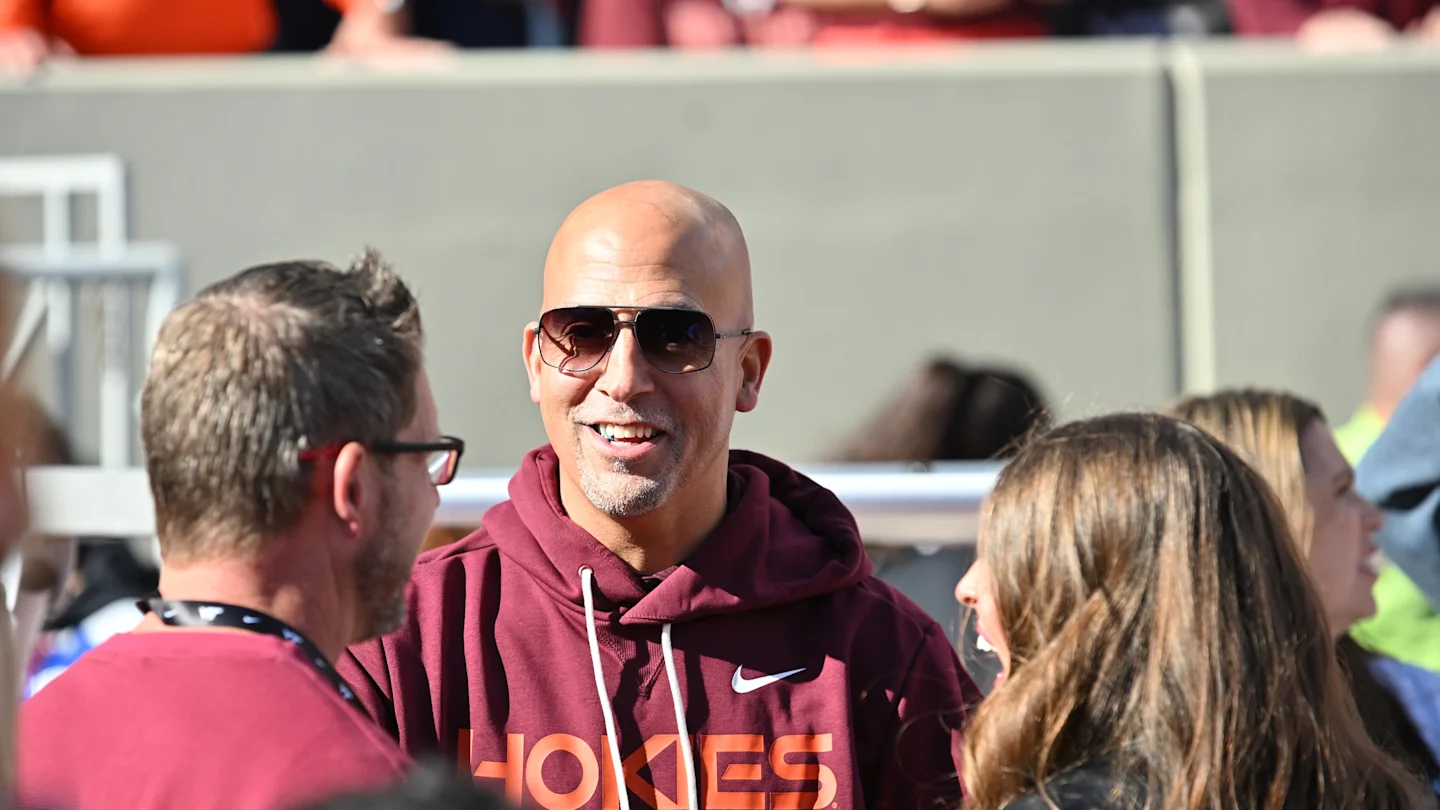
Blacksburg’s recruiting thermometer spiked within days of James Franklin’s arrival.
The former Penn State coach was introduced by Virginia Tech on November 17 after a 12-season run with the Nittany Lions that saw him win a Big Ten title, appear in the 2024 College Football Playoff semifinal, and leave with a 128-60 overall record.
In just over two weeks since taking the Hokies job, Franklin has already translated relationships and urgency into rapid sign-and-flip activity that dramatically improved the program’s industry rankings.
Industry trackers pegged Virginia Tech outside the top 100 (No. 121) on November 25; by Tuesday, the program had climbed up 96 spots to No. 25 after a string of commitments and flips, several of them former Penn State pledges.
Over a short window, Franklin and his staff flipped multiple four-star prospects, adding playmakers on both lines and at skill positions.
Some of the biggest moves include flipping six four-star recruits — LB Terry Wiggins, QB Troy Huhn, TE Pierce Petersohn, WR Davion Brown, OT Marlen Bright, and RB Messiah Mickens — all of whom decommitted from Penn State after Franklin’s firing.
That volume, not just a single headline recruit, is what pushed the Hokies up industry leaderboards.

Franklin’s early, unceremonious exit at 3-3 hasn’t disrupted his recruiting relationships.
For Virginia Tech, after a 3-9 season and a mid-season coaching change, the immediate priority was reestablishing connections and winning back recruits.
Franklin’s staff accomplished that quickly, which gives athletic directors, donors, and fans visible proof the program can compete for top regional talent again.
Virginia Tech’s 2026 schedule features home games against VMI, Old Dominion, and James Madison, along with a road test at Maryland before an ACC slate that features Clemson, Miami, NC State, Georgia Tech, Pittsburgh, Boston College, California, and Virginia.
If victories don’t come early, the recruiting spike risks fading before Franklin’s rebuild fully takes shape.
Read More at College Football HQ
- Nick Saban sends strong message on major SEC college football coach after taking new job
- $11.2 million college football coach signs extension amid departure rumors
- $29.6 million college football coach reportedly retires after seven seasons
- Major college football program set to make 29th straight bowl game appearance
NIL
College Football TV Ratings: Top 10 most-watched games of Week 14
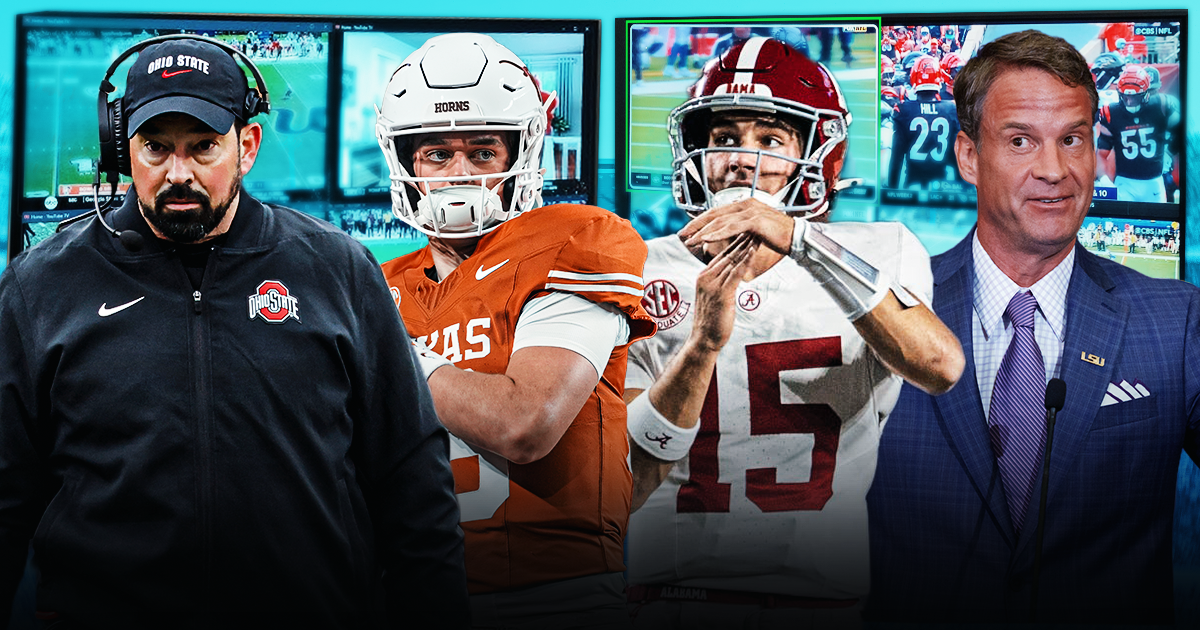
The final week of the regular season delivered plenty of rivalry flare. It was also an opportunity for networks to score more TV ratings wins to close out the college football campaign, and On3 is breaking down the most-watched games of Week 14.
The Week 14 slate began on Thanksgiving with Navy vs. Memphis before a jam-packed Black Friday slate of SEC rivalry games. From there, Saturday had more marquee matchups, headlined by Michigan vs. Ohio State in the early window, which became the most-watched college football game of the 2025 season.
SUBSCRIBE to the On3 NIL and Sports Business Newsletter
On3 obtained Nielsen Big Data + Panel ratings data for the most-watched rivalry games of Week 14. Here is the full breakdown of the week’s college football TV ratings.
Note: SEC Network, ACC Network and CBS Sports Network do not pay for Nielsen to measure viewership.
Michigan vs. Ohio State
Date/Time: Nov. 29, Noon ET
Channel: FOX
Viewers: 18.4 million
The Game was once again a big draw in Week 14 and became the most-watched game of the season. Ohio State’s victory over Michigan averaged 18.4 million viewers on FOX to lead the charge as the Buckeyes ended their losing streak against the Wolverines.
Texas vs. Texas A&M

Date/Time: Nov. 28, 7:30 p.m. ET
Channel: ABC
Viewers: 13.0 million
The Lone Star Showdown had plenty at stake as Texas A&M headed to Texas. The Longhorns came away victorious, though, pulling off the upset in primetime on Black Friday in front of 13 million viewers on ABC.
Alabama vs. Auburn
Date/Time: Nov. 29, 7:30 p.m. ET
Channel: ABC
Viewers: 11.3 million
One of college football’s most storied rivalries returned to Jordan-Hare Stadium and it lived up to the billing. Alabama nearly saw a commanding lead disappear before eventually fighting off Auburn in the Iron Bowl, which drew 11.3 million viewers for ABC’s Saturday night game.
Georgia vs. Georgia Tech
Date/Time: Nov. 28, 3:30 p.m. ET
Channel: ABC
Viewers: 8.7 million
The Clean, Old Fashioned Hate game saw two top teams in their respective conferences square off. Ultimately, Georgia rose to the occasion in a big way, handling Georgia Tech with ease at Mercedes-Benz Stadium in the rivalry affair.
LSU vs. Oklahoma
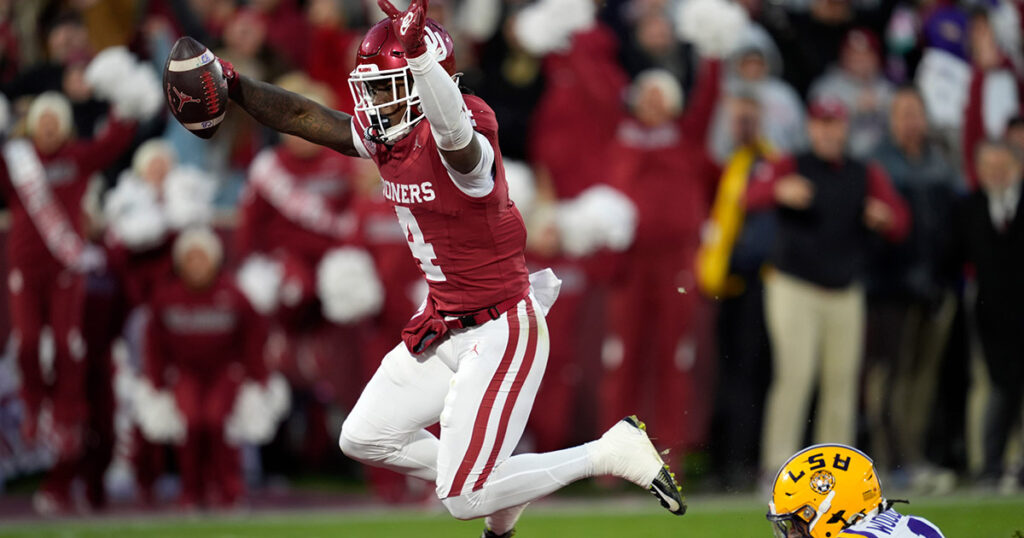
Date/Time: Nov. 29, 3:30 p.m. ET
Channel: ABC
Viewers: 6.4 million
Needing a win to continue its quest for a College Football Playoff berth, Oklahoma did just that in the late-afternoon window in Week 14. The Sooners took down LSU in Norman to put themselves in strong position in the 12-team bracket.
Ole Miss vs. Mississippi State
Date/Time: Nov. 28, Noon ET
Channel: ABC
Viewers: 5.2 million
All eyes were on the Egg Bowl as the Black Friday slate began as Ole Miss took down Mississippi State. It turned out to be the last game for Lane Kiffin as the Rebels’ head coach, and 5.2 million viewers were dialed in to watch.
Oregon vs. Washington
Date/Time: Nov. 29, 3:30 p.m. ET
Channel: CBS
Viewers: 4.3 million
In an old Pac-12 showdown, Oregon headed to Seattle for a late-afternoon matchup against Washington. The Ducks continued their strong season, taking down the Huskies in CBS’ Big Ten game – and the regular-season finale for analyst Gary Danielson.
Vanderbilt vs. Tennessee
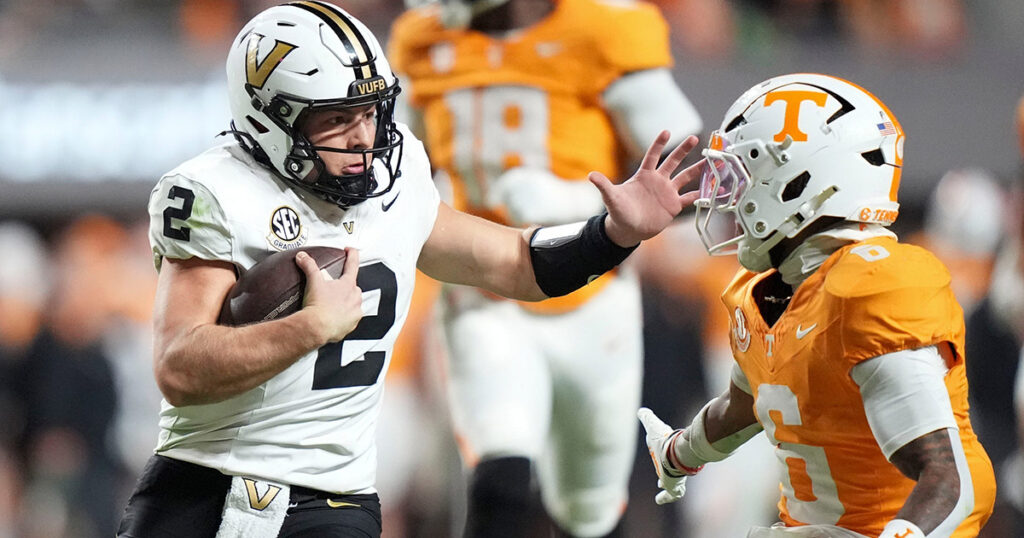
Date/Time: Nov. 29, 3:30 p.m. ET
Channel: ESPN
Viewers: 4.0 million
The Diego Pavia Show arrived on Rocky Top as Vanderbilt took down Tennessee. The electrifying Commodores quarterback continued to make his case for the Heisman Trophy and did so on the big stage with 4.0 million people tuned to ESPN.
Iowa vs. Nebraska
Date/Time: Nov. 28, 3:30 p.m. ET
Channel: CBS
Viewers: 3.8 million
A top Big Ten rivalry looked a bit different this year as both Iowa and Nebraska’s offenses showed out early. But the Hawkeyes kept their foot to the floor, taking down the Huskers 40-16 in one of the Top 10 most-watched games of Week 14.
Cincinnati vs. TCU
Date/Time: Nov. 29, 3:30 p.m. ET
Channel: FOX
Viewers: 2.74 million
Immediately following Michigan-Ohio State, TCU vs. Cincinnati also drew strong numbers for FOX. The Horned Frogs handed the Bearcats a fourth straight loss to end the season and get to the 8-win mark for the 2025 season.
- Indiana vs. Purdue (Nov. 28, 7:30 p.m. ET, NBC) – 2.69 million
- USC vs. UCLA (Nov. 29, 7:30 p.m. ET, NBC) – 2.2 million
With 11 games topping 10 million viewers this year, college football put together a huge year for TV ratings. Three of the Top 10 most-watched games of the regular season came in Week 14, and it’s now on to conference championships.
NIL
SEC Commissioner Greg Sankey calls for changes to college football calendar after Lane Kiffin split with Ole Miss for LSU
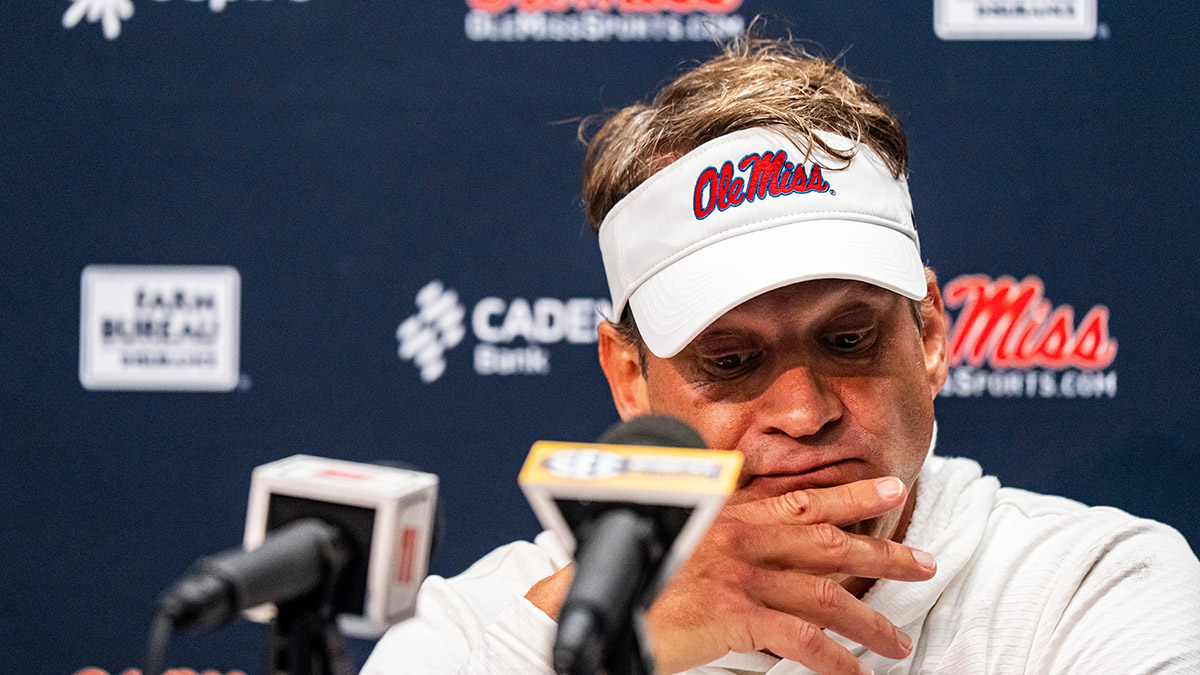
If the Lane Kiffin to LSU saga exposed one thing, it was that the current college football calendar is really not conducive to major coaching changes. There are simply too many variables involved.
SEC commissioner Greg Sankey was asked if the league could put into place some kind of rule that would prevent one program from pulling another program’s coach before the end of a season. Realistically, it cannot.
“You have to go back a number of years, we had a rule about responsibility for outreach if you were going to contact another coach,” Sankey explained. “Our outside legal counsel suggested for anti-trust reasons that it be eliminated, which it was years and years ago. I think that’s an example of the difficulty just legislating at a conference level.”
In fact, Sankey essentially predicted some of the chaos that unfolded with the Lane Kiffin saga. He knew having so many things packed into one area of the calendar was going to create some unintended consequences.
“You can go find my quotes where I warned that an early signing period added in December would change the calendar and the timing of coach changes,” Sankey said. “I think now there are more factors involved. But, in fact, going back to the moment where we added the December signing period, you saw earlier terminations of coaches during the season, and then the need to rapidly hire a coach in late November and early December.”
That’s exactly what happened this offseason. Both Florida and LSU fired their coaches to go with weeks remaining in the season, kicking off the Lane Kiffin sweepstakes.
LSU eventually got the upper hand, but even then, the hiring was messy. There were reportedly ultimatums given to staffers looking to join Kiffin, though those claims were later disputed. All of this in the middle of a playoff run for Ole Miss.
Regardless, the Lane Kiffin ordeal clarified for many people that change is needed. Sankey offered a few avenues.
“There are opportunities for adjustments to the calendar that, at least in my view, probably won’t solve everything but could provide a healthier environment,” he said. “And where there are solutions, so that you’re not disrupting a team’s season, I think those should be pursued.
“Unfortunately the environment we’re in doesn’t allow and hasn’t resulted in some of the changes that even the basic change like removing that early signing period from kind of compelling people to make change rapidly has taken place. Can changes be made? Absolutely. Is it just the recruiting calendar? Likely not.”
What other solutions could there be? How can a Lane Kiffin 2.0 be averted?
“Perhaps it’s the competitive calendar that can be explored,” Sankey said. “But those are multi-level issues where people have different opinions. We’ve added a transfer portal on top of that signing period that adds to the complexity.
“But I think everyone would agree, and forget particular circumstances, you take a step back and whether it’s a roster or a coaching staff, looking at something other than maybe a medical emergency, we should be able to have competition through the year with those rosters and coaching staffs intact. And we ought to figure out how we can adjust collectively on a national basis to make that happen.”
NIL
Some thoughts on the Cookie Man and college football’s funniest coaching search so far
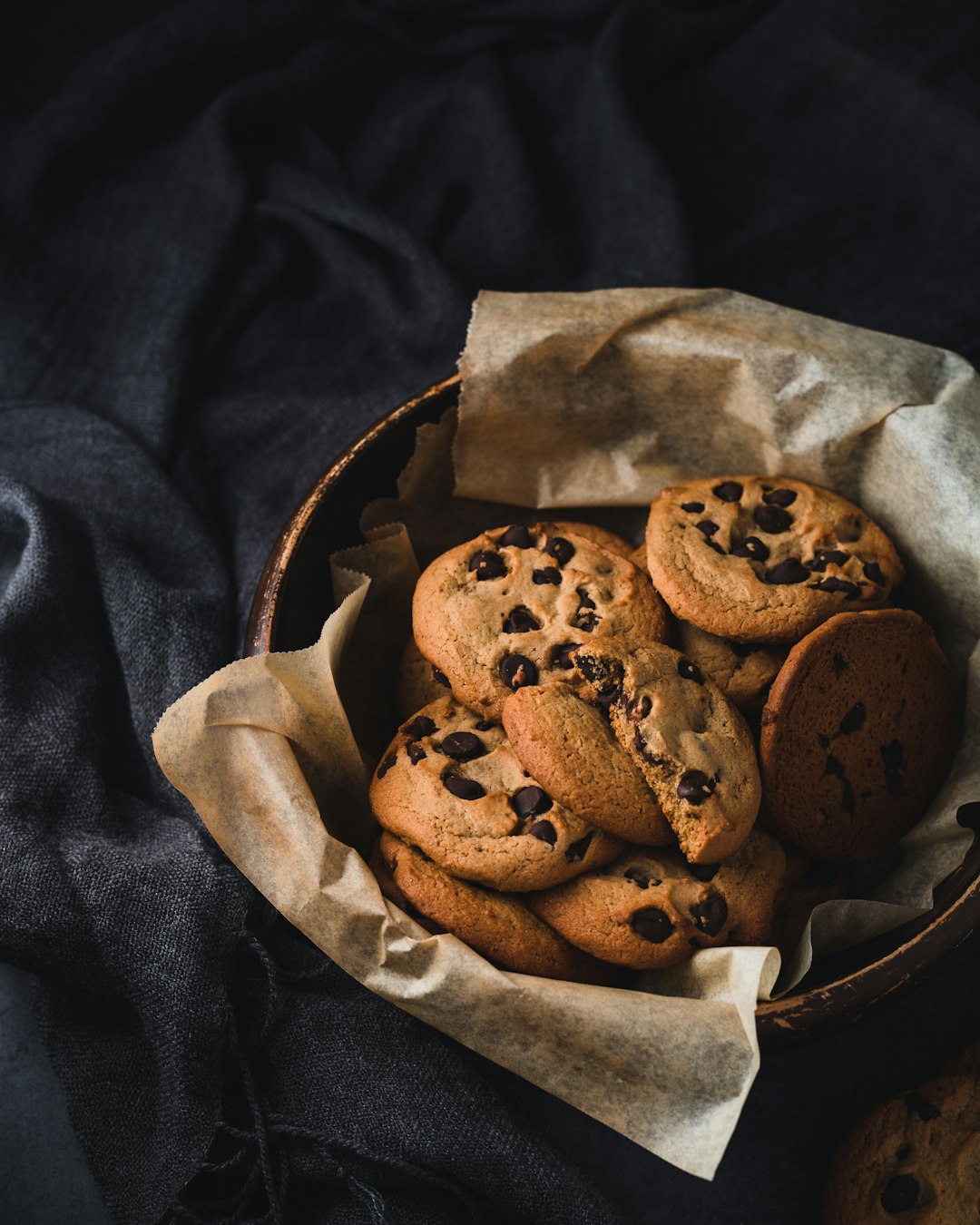
In partnership with

Good morning, and thanks for spending part of your day with Extra Points.
Save up to $100 on Qi35 This Holiday Season

The holiday season is here and TaylorMade is making it ridiculously easy to score something everyone on your list will actually love.
The Qi35 lineup is built for players who want more speed, more forgiveness, and a whole lot more fun on the course. Right now you can save $100 on Qi35 drivers and $50 on Qi35 fairway woods and rescue clubs.
Whether you’re upgrading your own bag or surprising the golfer in your life, this is the kind of gift that pays off round after round.
The trouble with trying to plan an editorial calendar in advance is stuff just keeps happening. I had a different story planned for today, but recent events have caused me to want to speak from the heart about something else.
Friends, I’d like to talk about the Cookie Man
As most of you know, BYU is owned and operated by the Church of Jesus Christ of Latter-day Saints, colloquially known as the Mormons. Devout Mormons do not drink alcohol, do not smoke, do not consume THC beverages or edibles, do not view pornography, do not gamble and generally do not participate in many of American society’s socially acceptable vices. Shoot, they don’t even drink coffee.
So what do you do when you need to temporarily dull the pain of being alive but are theologically prohibited from doing what everybody else does? You eat junk food. Utah County loves it some fancy soda pop and 1,500-calorie cookies.
Which is why it’s so funny that perhaps the most visible booster during the Kalani Sitake will-he-or-won’t-he-go-to-Penn-State storyline was Jason McGowan, the CEO of Crumbl Cookies. According to the Extra Points style guide, McGowan will henceforth be referred to as either “Big Cookie” or “the Cookie Man” in this publication.
It’s not every day that the public-facing booster of a fan base produces something so deeply aligned with that market. It’d be like if the biggest Wisconsin bag man were a cheese magnate, the biggest Idaho donor were the CEO of All the Potatoes, or the biggest Rutgers booster working in, uh, waste management.
As poet laureate and sports economist Lil Wayne once remarked, “real G’s move in silence like lasagna.” The boosters you hear about on Twitter — the people who are constantly talking to message-board owners — aren’t usually the ones throwing the biggest checks around. Those deep-pocketed boosters also typically don’t come from fun industries. There are exceptions, but across most schools, the biggest athletic boosters are folks involved in law, tech, high finance and, occasionally, agriculture.
I’ve talked to a few folks connected to BYU over the past few days, and I’m quite confident that was also the case here. It’s very funny to write “BIG COOKIE DEFEATS PENN STATE” or “COOKIE MAN OUTBIDS BIG TEN BLUEBLOOD” or something, but that isn’t actually what happened. The Cookie Man helped BYU keep Sitake, but if we’re interested in being Accurate Serious Professionals, it’s worth noting that Penn State’s contract offer was still more money than what BYU ultimately paid the coach, and that money didn’t all come from the Cookie Man.
It would be very funny if that money came from other LDS-adjacent industries (BIG MINIVAN! BIG UNFASHIONABLY MODEST FORMAL DRESSES! BIG FOLDING CHAIR!), but I imagine its sources were boring stuff like “executives at Goldman” or “various Silicon Slopes tech companies.” That’s more common, but it doesn’t make a good tweet.
Also, speaking of BYU and money …
Part of what makes this storyline so interesting to me, specifically, as a national college sports writer and also a guy who was a Mormon for a really long time, is how unlikely it would have seemed even just a few years ago.
BYU — and, for that matter, LDS institutions generally — has a reputation for not really paying top dollar anywhere. If you’re a professor, a baseball coach, a computer programmer or a construction manager, chances are, you can make more money doing what you do somewhere else. Part of that is a reflection of Utah’s labor market, but part of it is also ideological. BYU doesn’t want people attached to the institution by golden handcuffs. They want folks who want to be there. Do I always agree with that thinking? No, but I understand it.
By paying a football coach in the neighborhood of $9 million (as reported here and here), coupled with the investment in the men’s basketball program, it’s clear that BYU is prepared to spend competitively in the market. Whether that attitude changes elsewhere within church employment is interesting to me, but likely outside the scope of this newsletter.
I do think it’s worth noting where that money is coming from. BYU is a private school, and as such isn’t obligated to share contracts, MFRS reports or financial info at all, no matter how many times I ask very nicely. So I don’t have specific receipts.
But I do know that LDS church officials are very sensitive to the idea that specific church funds would be used for athletic payrolls, coach or athlete. Devout Latter-day Saints also pay a 10 percent tithe on their income to the church, money that is used to pay for educational, charitable and ecclesiastical operations around the globe. The idea that some widow’s mite in northern Brazil was used to pay LJ Martin would be a scandal … if not to the world, then certainly to most of the church community.
I’ve been told increased athletic investments are driven primarily by donors, rather than existing operational funds. And while I’d love to actually look at the books myself, I legitimately do believe that.
I’ll be curious, as senior church leadership becomes more global, or as public frustration with the status quo of college sports grows, whether there will be internal pushback on the optics of paying this kind of money. But maybe not! As the last 100-plus years have shown us, fans and the academy might get upset about rising expenses or ideological shifts … but they hate losing even more.
FWIW, I think Sitake is a very good football coach and worth locking up for BYU, especially given the paucity of other experienced LDS football coaching candidates. Will Penn State’s hire work out? Or any of these other hires? I have no idea. Can’t-miss hires fail all the time, and fourth choice candidates sometimes turn out to be the right ones.
A few quick back-of-the-notebook thoughts:
-
It looks like the SCORE Act, the Republican-driven college sports legislation that would have codified much of the House settlement terms, is dead … for now. Democratic leadership whipped against the vote, and just enough Republicans defected to keep the thing from passing. My read on the situation is that the defeat of SCORE shouldn’t be read as a bipartisan rejection of the idea that Congress shouldn’t get involved in these issues. In fact, at least one GOP rep, Chip Roy (TX), is saying that Congress should be more involved. I look at this more as a reminder that issues that have nothing to do with college sports can impact the legislative calendar, and the path to getting anything passed right now is razor-thin.
-
Anyway, I think this about sums it up:
Here’s what else we’ve been working on:
-
On Monday, I laid out the good, bad and ugly of the Extra Points business. We’re growing, our future is bright, but we need to be built less around ME. All of the details, and a 15 percent off discount code (sale ends this evening!) are here.
We want to finish the year strong, and we have some original reporting, special projects and plenty of FOIAing in the hopper the rest of the month. You can read everything we write by making sure you’ve upgraded to a premium subscription. These subscriptions pay our bills, from FOIA fees to bowl game sponsorships to travel and more.
And hey, as a parting gift, we finished a big update to Who’s That Football Team. We now have a daily Puzzle challenge. The game is totally free! Today’s clue comes from the FCS ranks, but who knows who will by our mystery program tomorrow….
-

 Rec Sports2 weeks ago
Rec Sports2 weeks agoFirst Tee Winter Registration is open
-

 Rec Sports1 week ago
Rec Sports1 week agoFargo girl, 13, dies after collapsing during school basketball game – Grand Forks Herald
-

 Motorsports1 week ago
Motorsports1 week agoCPG Brands Like Allegra Are Betting on F1 for the First Time
-

 Sports2 weeks ago
Sports2 weeks agoVolleyball Recaps – November 18
-

 Motorsports2 weeks ago
Motorsports2 weeks agoF1 Las Vegas: Verstappen win, Norris and Piastri DQ tighten 2025 title fight
-

 Sports1 week ago
Sports1 week agoTwo Pro Volleyball Leagues Serve Up Plans for Minnesota Teams
-

 Sports1 week ago
Sports1 week agoSycamores unveil 2026 track and field schedule
-

 Sports1 week ago
Sports1 week agoUtah State Announces 2025-26 Indoor Track & Field Schedule
-

 Sports1 week ago
Sports1 week agoTexas volleyball vs Kentucky game score: Live SEC tournament updates
-

 NIL5 days ago
NIL5 days agoBowl Projections: ESPN predicts 12-team College Football Playoff bracket, full bowl slate after Week 14




















































